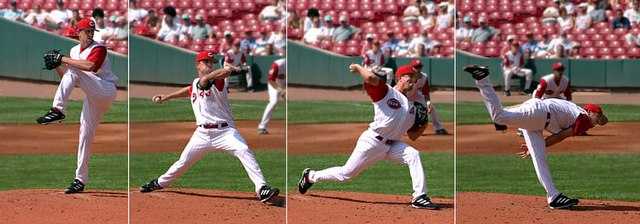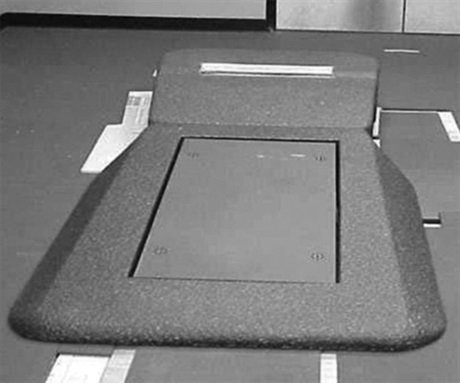Why can some pitchers throw 105 mph and some only 85? Baseball players are continuously trying to throw the ball faster and hit the ball further. The lower body muscles, especially the gluteus maximus/medius, adductors and and other pelvic movers, are essentially what power the throw and what can directly increase pitch velocity. Learning how to efficiently use the muscles in the lower body while pitching will allow players to optimize their performance, train correctly off the field, and prevent injuries.
The concept of a kinetic chain explains how connected muscles and joints are able to transfer force along a segment of body parts. For example, walking is a relatable model of a kinetic chain. You use the ground reaction to send force through your ankle, knee, and hip joints which propels you forward. If you want to move faster (running or speed walking) you send more force from the ground to your hips at a faster rate. This is how pitching works, except instead of transferring force linearly through the extension of joints, ground force is sent rotationally through the body to the baseball.
So how do you optimize the kinetic chain? The recipe seems straightforward – the secret to throwing fast and hitting far is to send a lot of force through your joints as quickly as possible. However the timing of using certain muscles is important to avoid ‘breaks’ in the kinetic chain, which is an inefficiency in a muscle or joint along the chain. One study divided the pitching motion into distinct, chronological phases and found that certain muscles reached peak activation at different times of the throw. Specifically the back leg (person’s right leg in images below) has a peak activity reading in an earlier phase and the stride leg (person’s left leg in images below) does not reach peak activity until the last phase.

Another study used force plates (see figure to right) to measure the amount of ground force pitchers can create and how well they can transfer this force to their stride leg. Of the hardest throwers in the study, the stride leg recorded a GRF (ground reaction force) up to 200% of the participant’s bodyweight! There was a strong correlation linking stride leg GRF and pitch velocity. If a participant had a stride leg GRF considerably lower than the mean, it implied their mechanics had a break in the kinetic chain and their pitch velocity was likely not as fast.
Players and coaches have been searching for the perfect pitching mechanics for many years. In short, current research suggests how training should encompass movements that work the whole chain as well as isolated segments of the chain. Unilateral (single leg) strength, rotational power and balance, and linear forms of the kinetic chain in the body are examples of training regimes that are considered to be effective at doing this. While there does not seem to be a 1-type-fits-all method to pitching, there are similarities found across pitching mechanics that elite pitchers share. Two of those characteristics covered here, an efficient kinetic chain and a strong lead leg, are just the start to increasing a pitcher’s velocity and preventing injury. If recent trends continue it is very likely that somebody will break the 105 mph pitch velocity record!

